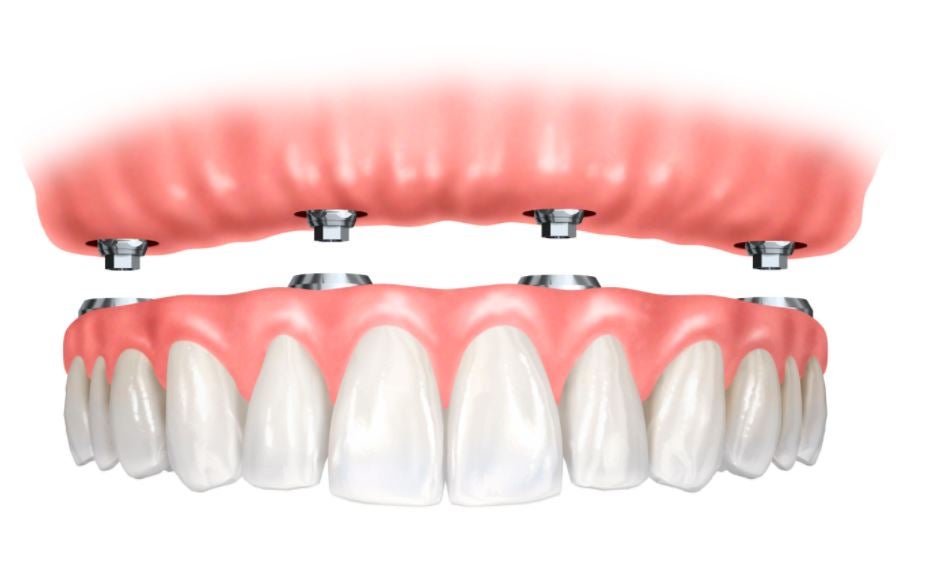Indicators on Dental Sense You Need To Know
Table of ContentsThe Buzz on Dental SenseDental Sense Can Be Fun For EveryoneThe Basic Principles Of Dental Sense What Does Dental Sense Mean?
are clinical gadgets surgically dental implanted into the jaw to restore a person's capacity to eat or their look. They offer assistance for synthetic (fake) teeth, such as crowns, bridges, or dentures. When a tooth is shed because of injury or illness, an individual can experience problems such as fast bone loss, defective speech, or changes to eating patterns that cause discomfort.Oral implant systems are composed of a dental implant body and dental implant abutment and might also include an abutment addiction screw. Same day dental implants. The oral implant body is operatively inserted in the jawbone instead of the tooth's origin. The oral implant abutment is normally connected to the dental implant body by the abutment fixation screw and expands with periodontals into the mouth to support the attached fabricated teeth
(http://www.place123.net/place/dental-sense-miami-united-states)Structure of The Dental Implant System selecting dental implants, talk to your dental company regarding the prospective benefits and threats, and whether you are a candidate for the treatment. Things to think about: Your general wellness is an important element in establishing whether you are an excellent candidate for oral implants, how much time it will certainly require to heal, and the length of time the implant may remain in place.
Smoking cigarettes might affect the healing process and decrease the long-lasting success of the dental implant. The healing procedure for the dental implant body may take several months or longer, throughout which time you normally have a temporary joint instead of the tooth. the dental implant treatment: Carefully comply with the dental health directions offered to you by your oral supplier.
The 9-Minute Rule for Dental Sense
Implant failure can cause the need for one more operation to fix or replace the implant system. Restores the capacity to chew Restores aesthetic look Assists keep the jawbone from shrinking because of bone loss Preserves the health and wellness of the surrounding bone and gum tissues Assists maintain surrounding (nearby) teeth secure Improves high quality of life Damage to bordering natural teeth during dental implant placement Injury to the surrounding cells during surgery, such as sinus opening Injury throughout surgical procedure (as an example, crack of bordering jawbone) Insufficient function, such as seeming like the teeth do not bite with each other typically A sensation that the tooth hangs or twisting in place arising from an abutment screw loosening up Implant body failure (looseness of the implant body) as a result of systemic infection, which might be extra likely in people with uncontrolled diabetes as a result of neighborhood infection in bone and periodontals supporting the dental implant body because of postponed healing, which might be more probable in patients who smoke see this page Problem cleaning up the gum tissues around the implant, leading to poor oral health Without treatment gum disease Post-surgical pins and needles due to nerve impingement or damages Always alert healthcare carriers and imaging service technicians that you have oral implants prior to any kind of magnetic vibration imaging (MRI) or x-ray procedures.
FDA is not familiar with any damaging events reported for MRI or x-ray procedures with oral implants. Oral implants systems are typically constructed from products that comply with worldwide consensus criteria of the International Organization for Standardization (ISO) or ASTM International. These standards have information of what makes a safe material.

An oral implant is a framework that replaces a missing out on tooth. With screw-like devices, the surgeon inserts an implant into the jawbone, and it acts as a support for a synthetic tooth, called a crown.
3 Easy Facts About Dental Sense Explained
Some people are not qualified for dental implant surgery. It is for dental specialists to operate individuals with: severe illnessuncontrollable metabolic diseasebone or soft tissue disease or infectionIf these concerns are dealt with, a person can have the surgical treatment. In, oral specialists abstain from operating individuals with: If people with any one of the above undertake oral implant surgical treatment, there is a greater threat of the dental implant failing.

Dental implant surgical procedure is an individualized procedure. It's not the exact same for everybody. Yet the adhering to offers a general review of what you can expect your dental practitioner, dental surgeon, periodontist or prosthodontist to do: Put the dental implant operatively. Offer you time to heal. Affix the message and final crown, bridge or denture.
Next off, your doctor will very carefully put the oral implant right into your jaw. If your implant is near the front of your mouth, your dental practitioner will certainly make a short-term tooth for you to put on till you recover.
Unknown Facts About Dental Sense
Your copyright can inform you what to expect in your situation. During the recovery phase, your jawbone must fuse to the dental implant. This process, called osseointegration, is vital for stability and long-term success. This procedure can take anywhere from three to 9 months. In some situations, it may take much longer.
Once your implant heals, your dental practitioner can connect the abutment (small connector blog post) and your last repair (crown, bridge or denture). This normally takes regarding one hour to finish and may require a second small surgery. You should not feel any discomfort during your dental implant procedure because your copyright will use medication to numb your gum tissues.